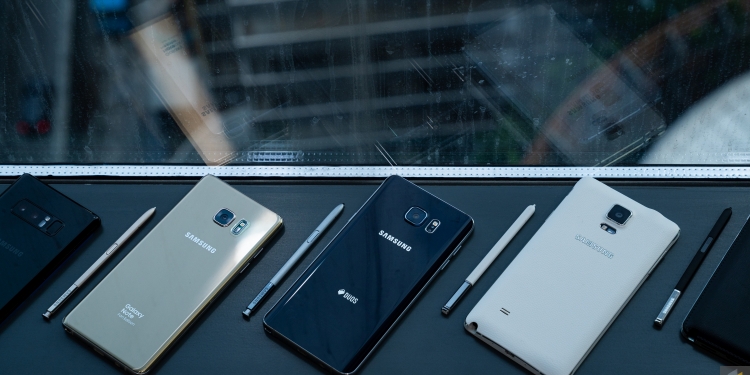There are few smartphone series that have made more of an impact on our world than the Samsung Galaxy Note. It is the best smartphone Samsung makes every single year. It’s the reason why we have big smartphones today. And it’s also the only one to make a stylus work in a post-iPhone civilisation.
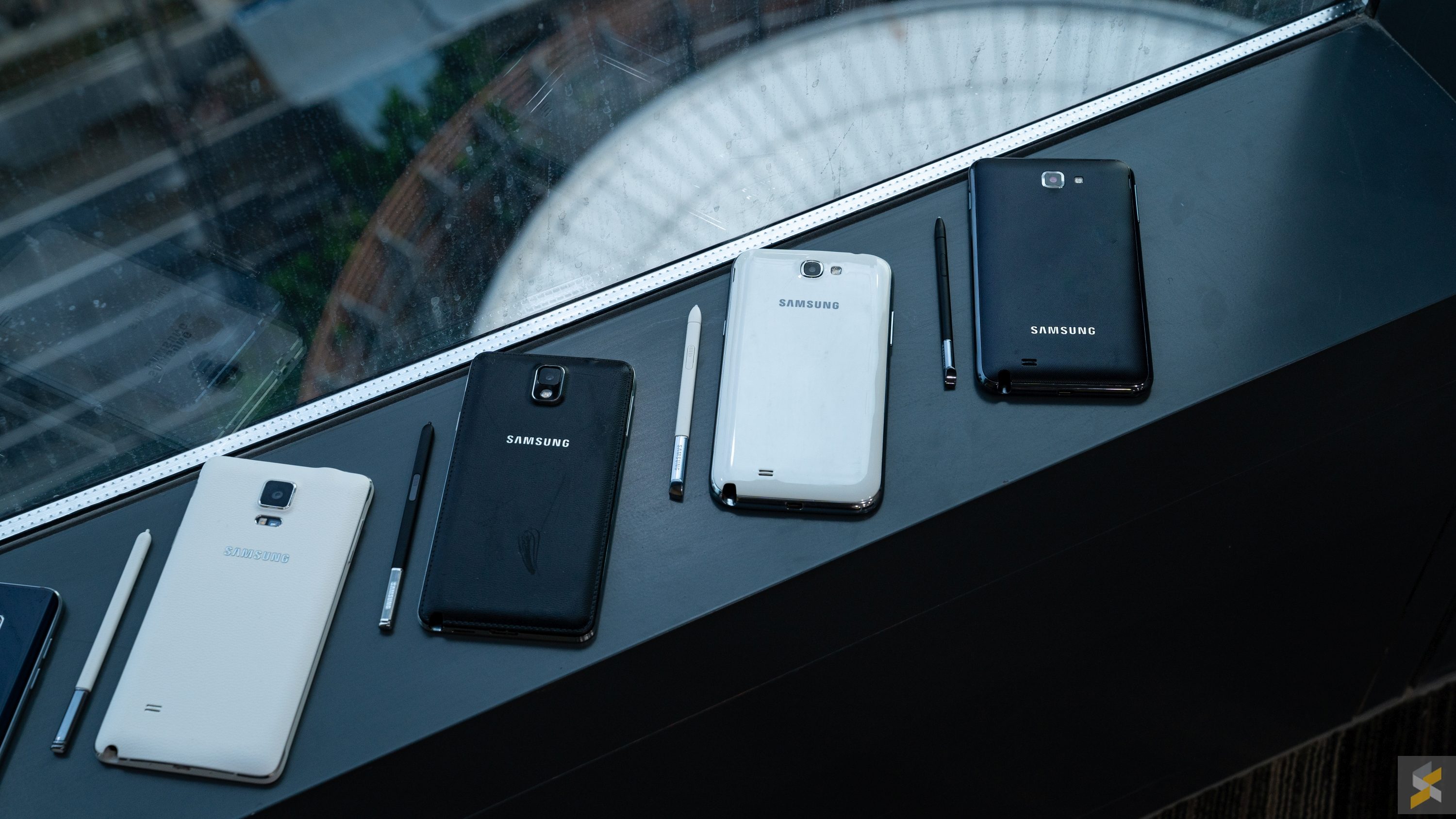
But, even in an all-star lineup, it would be unfair to assume that every smartphone has the same amount of impact on the line, and the world as a whole. It’s just not how things work. And that’s very much the case with Samsung’s Galaxy Note. That’s why today, ahead of the Galaxy Note 10 launch, I’m going to rank them–all of the Galaxy Notes–in order, from most to least consequential.
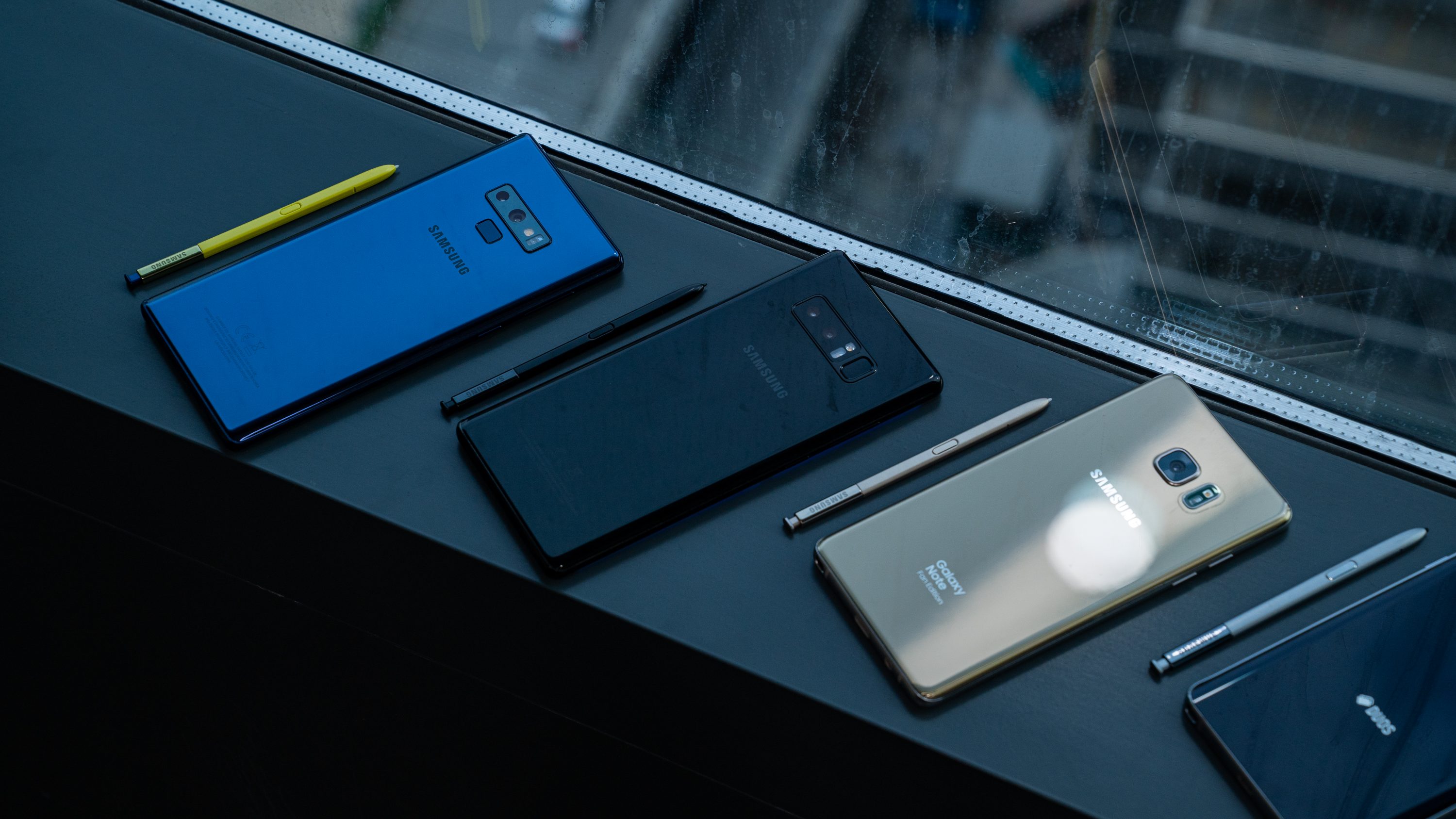
I’ll be basing my decisions on three factors: Number 1, how the phone stacked up to its competition at the time. Number 2, how the phone’s build and aesthetic has held up over time. And Number 3, its legacy. How much impact has this particular Note had on both its own lineup and the world at large?
Let’s get started.
Samsung Galaxy Note
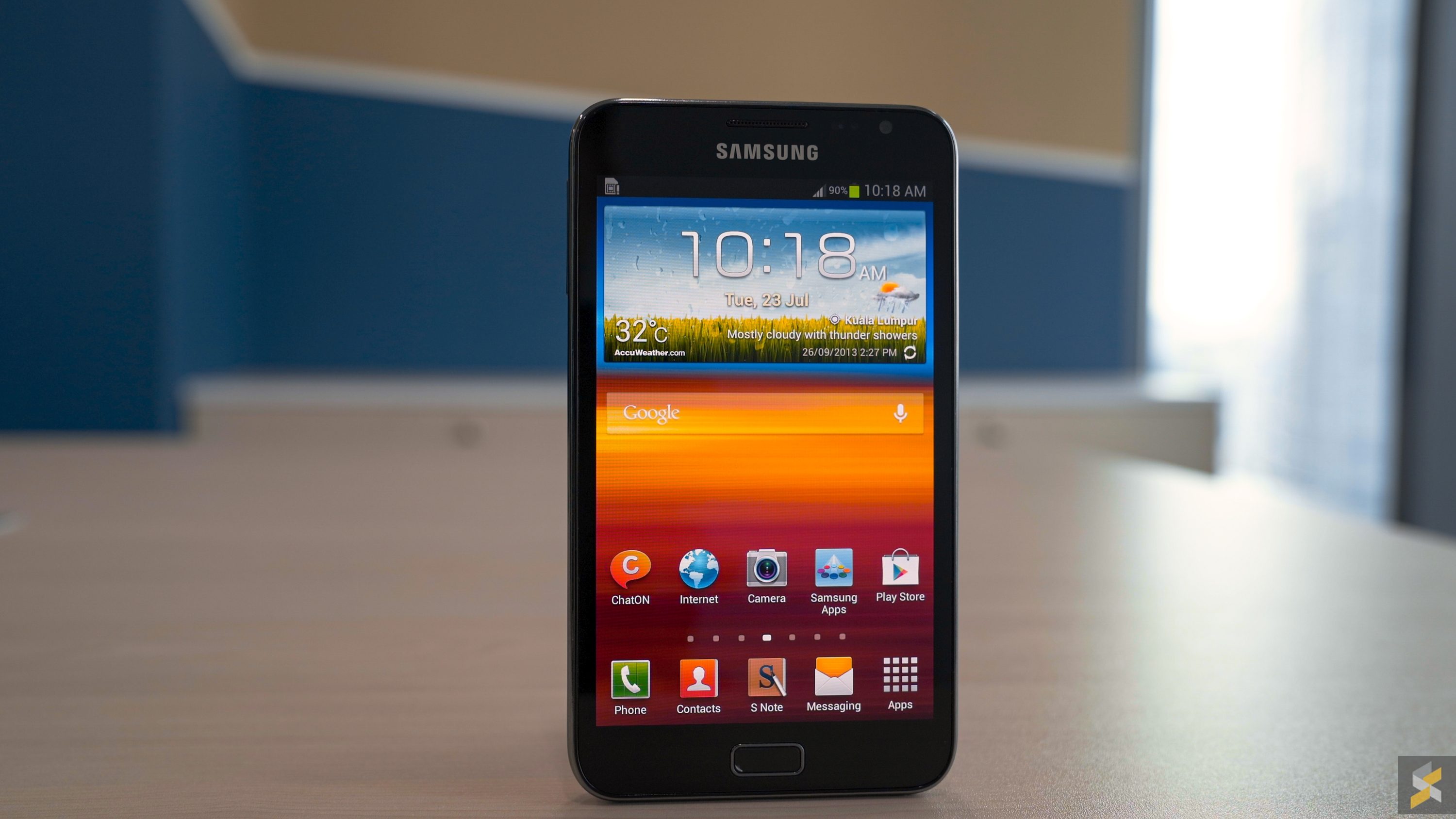
One of my favourite things about the Galaxy Note series is its utter defiance to what is the norm. It took one look at the small smartphones of its time and was like no, we should do better. We should do bigger. And I think of all the Notes, none of them represents this big middle finger to the establishment quite like the first Galaxy Note.
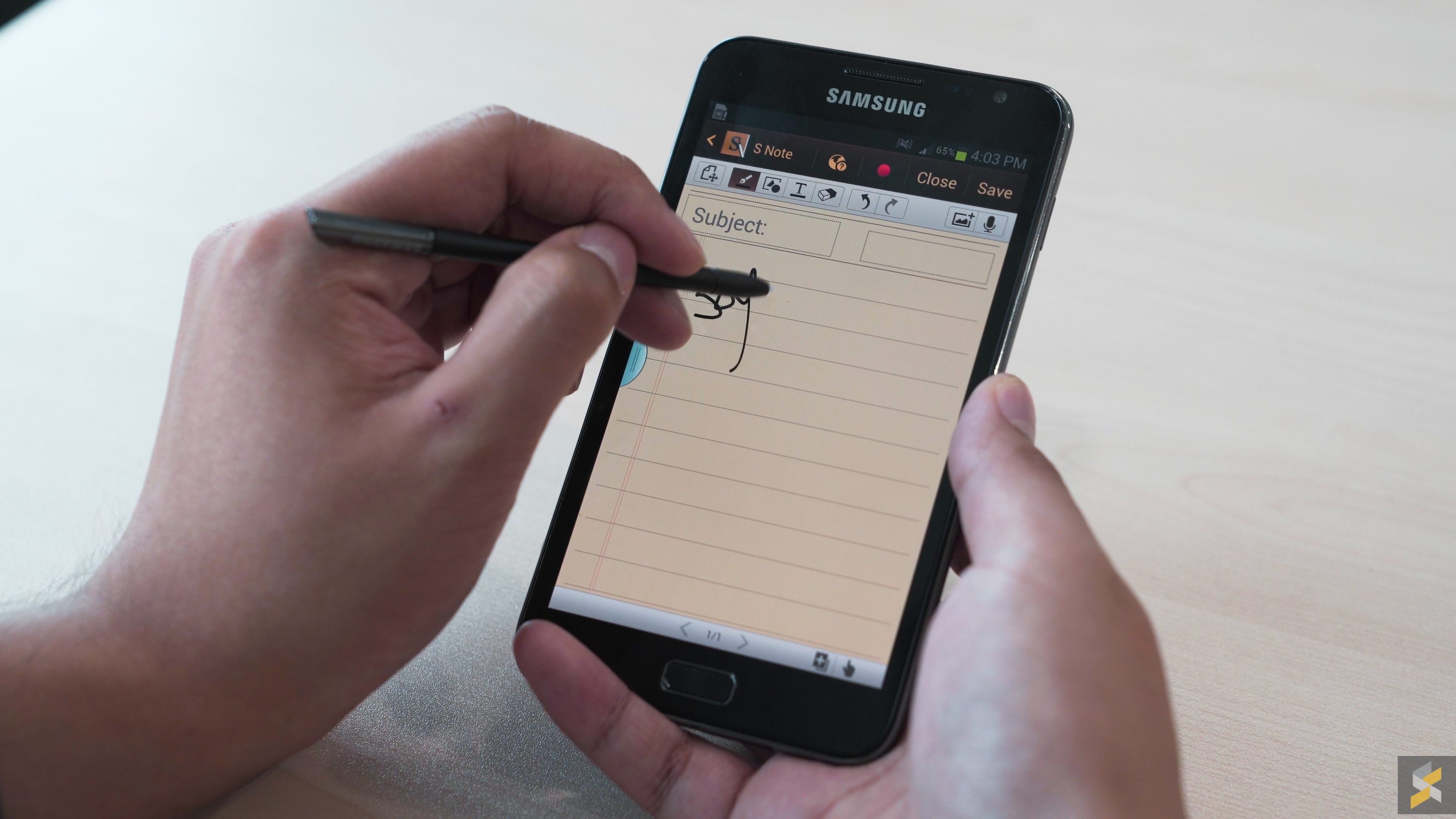
In 2011, the smartphone’s 5.3” display was unfathomable. I mean, the iPhone at the time, the iPhone 4S, only had a 3.5 inch display. Phones were barely approaching 5-inch screens, let alone going beyond it. Then, you have the fact that the phone came with a stylus called the S Pen. A stylus! It was something nobody thought they would ever see in a post-iPhone world.
Besides that, it was also one of the most capable smartphones in the market. In addition to its huge high-resolution display, the smartphone also had one of the best cameras in the game, a whopping one gigabyte of RAM and sixteen gigabytes of expandable internal storage.
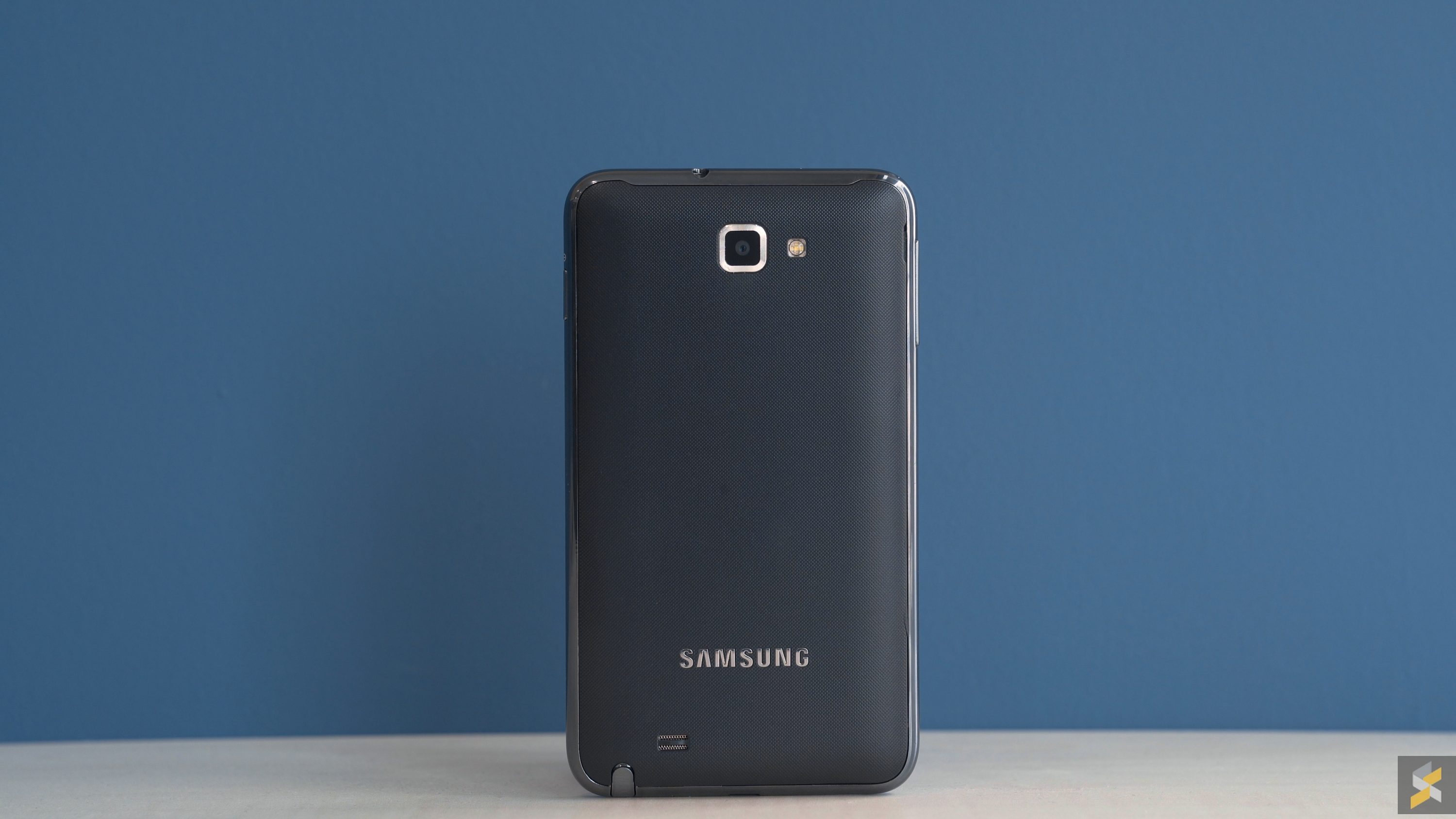
The only major gripe I have with this Galaxy Note was with its build. For starters, the phone was absolutely in the wrong aspect ratio. Unlike the 16:9 ratios most other phones were using, Samsung went with a 16:10 ratio which made the phone a lot wider than would have been comfortable. Even today, next to a 6.4” Xiaomi Mi 9T, the Galaxy Note feels huge in the hand, so I can’t imagine how big it must have felt back in 2011.
Plus, you’ve got the fact that in a world where the gorgeous glass and stainless steel sandwich known as the iPhone 4S exists, the Galaxy Note was mostly a plastic affair. Still, there would be no Note line without this Galaxy Note, so while its aesthetics and build don’t really hold up, its legacy and commitment to giving you the best performance, lives on. Which means, it sits very comfortably near the top of our rankings.
Samsung Galaxy Note 2
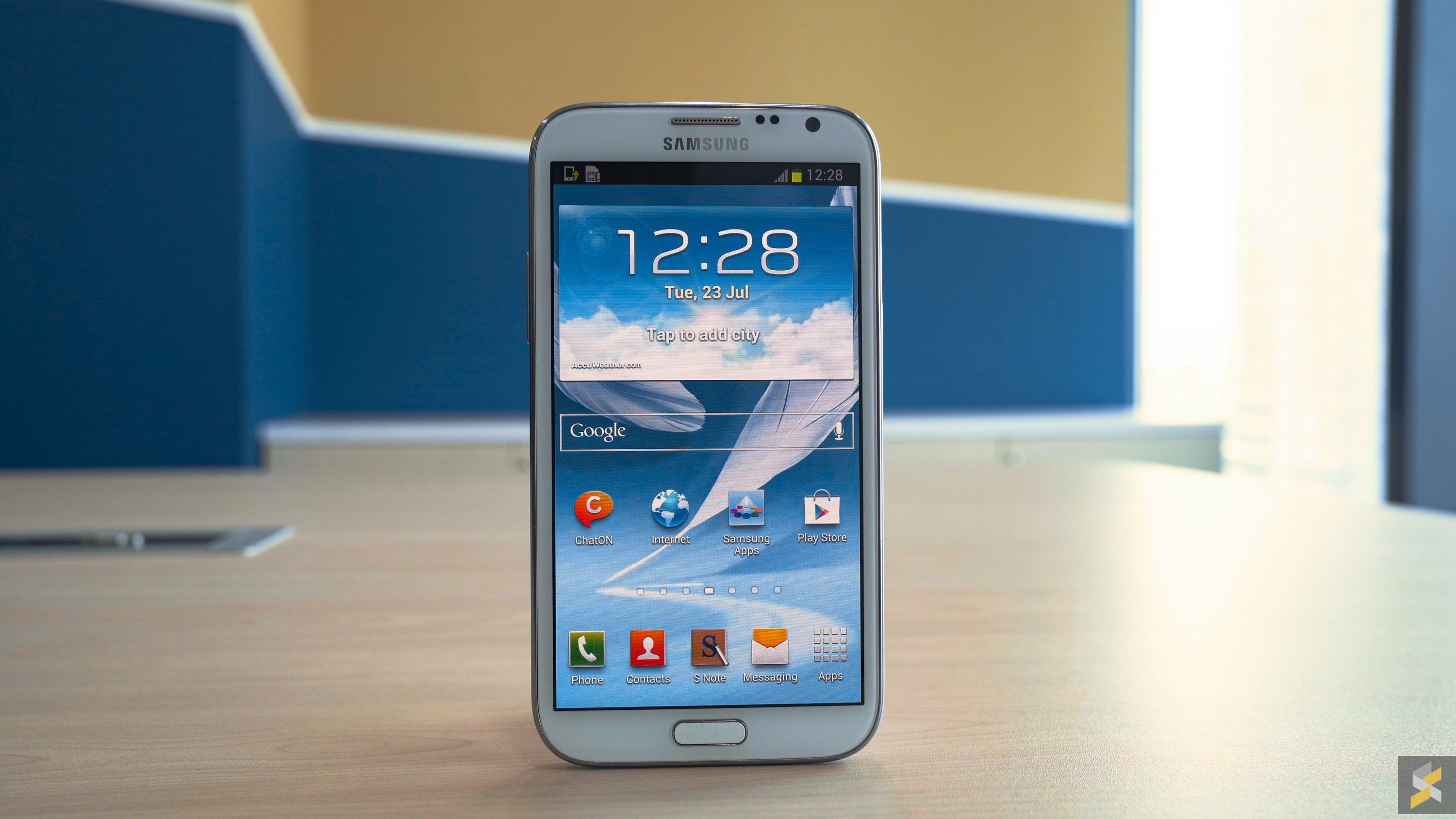
But as all things come to an end, the Galaxy Note would too. After its commercially successful run, the Galaxy Note was replaced by the Galaxy Note 2 and it was like Samsung turned the dial up to eleven. Despite the fact that its large size was the one consistent con in most reviewer’s lists, Samsung made the Galaxy Note II even bigger. But, Samsung learned from their mistakes and opted for a much more reasonable 16:9 aspect ratio instead. So, despite the fact that the Note 2 had a bigger screen, the handset was actually narrower than the 5.3” Note so it fit more comfortably in the hand.
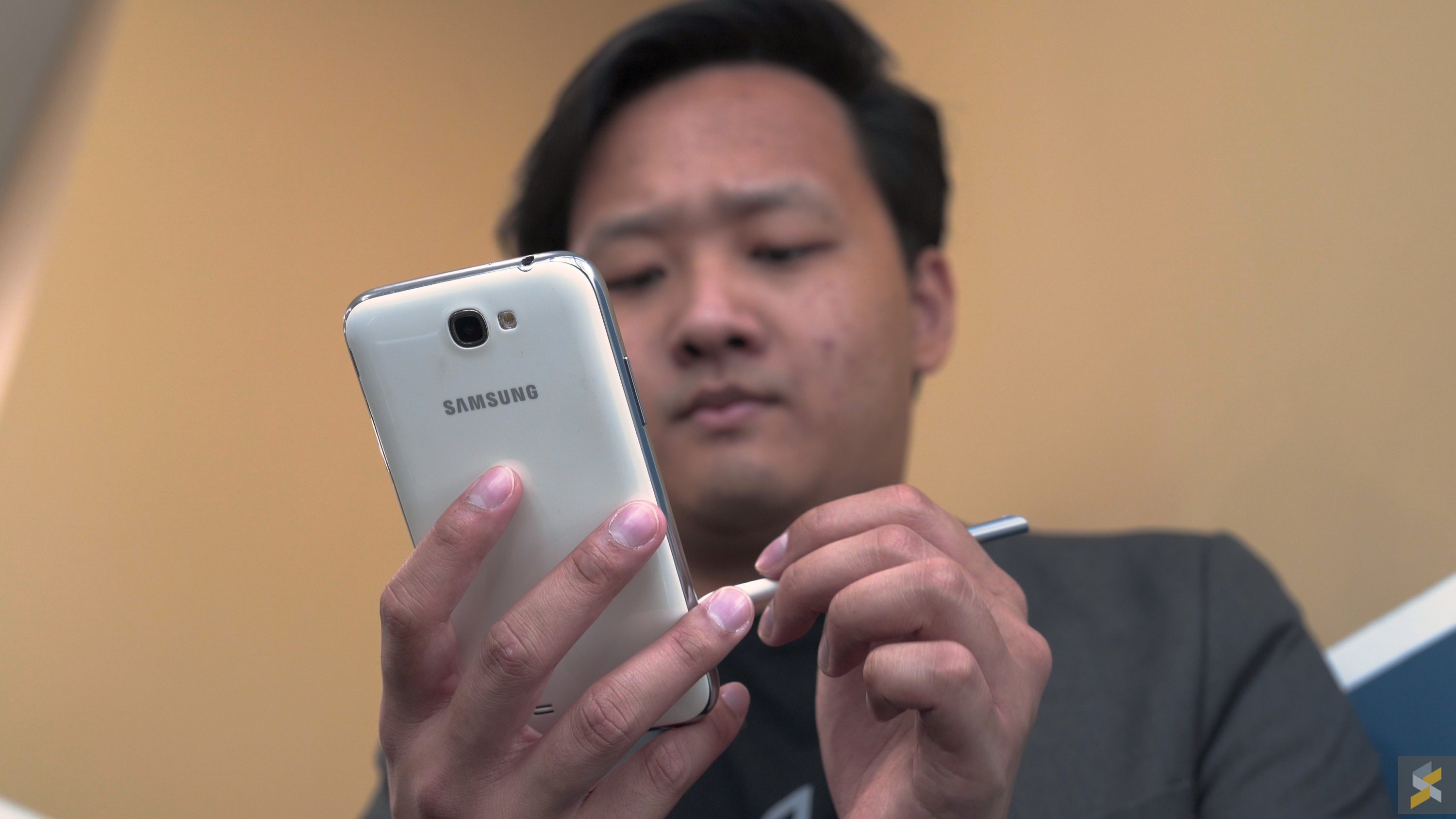
Alongside this small yet big change the Galaxy Note 2 was also one of the most capable phones in its day. The handset had a massive 3,100 mAh battery, more S Pen advancements including Air View and crucially, lower latency, plus an incredible spec-sheet. That said, while it continued the tradition of the Note’s thirst for power, it also continued its boring design. The Note 2 lives in what I consider the dark ages of Samsung’s design so it loses major points there. And, without the legacy of the first Note to back it up, I have to rank the Note 2 below its predecessor.
Samsung Galaxy Note 3
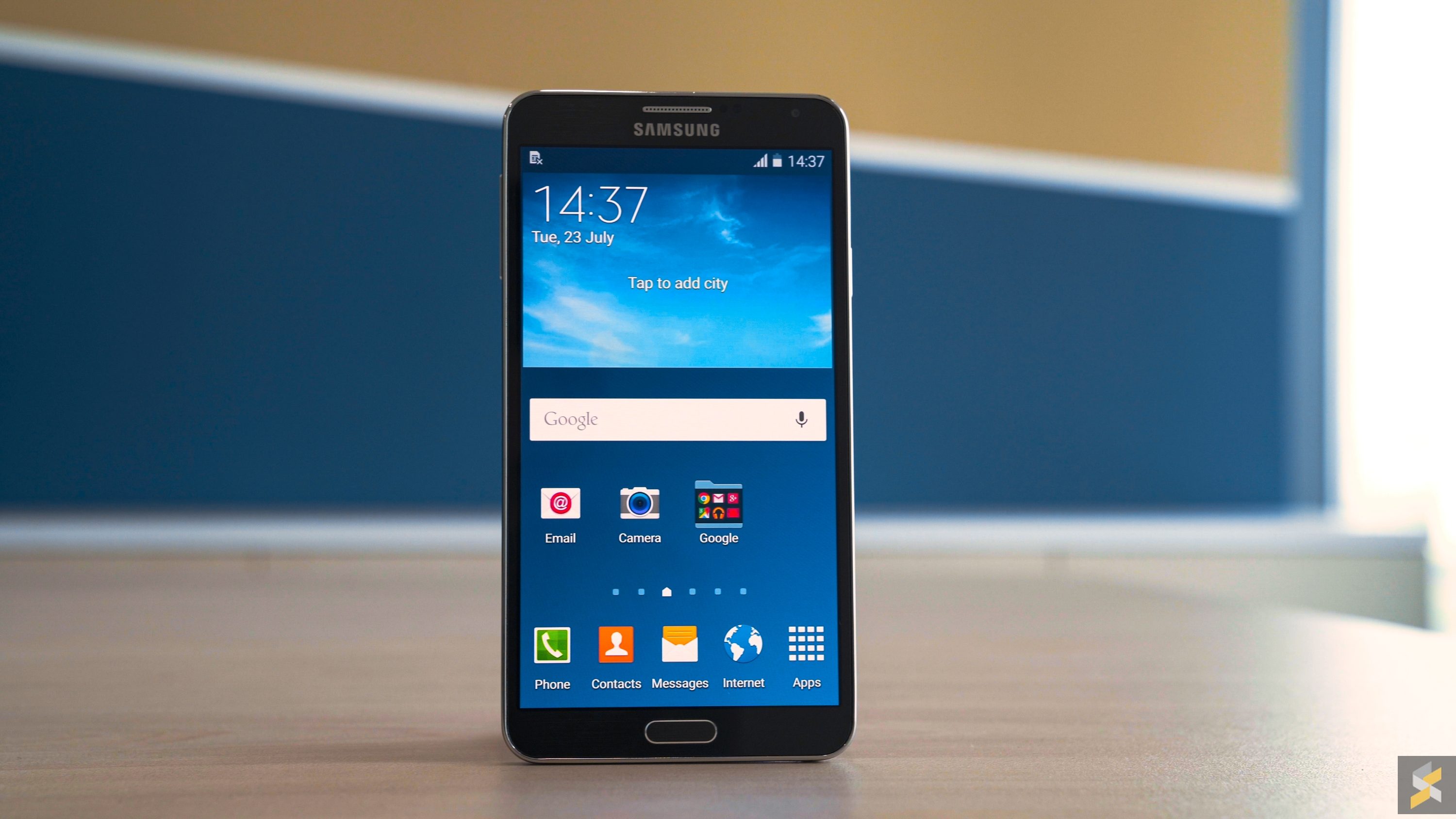
Next, we have the Galaxy Note 3. Now, if you look at how this phone compares to its competition, the Note 3 scores top points. It was a spec beast for its time with a massive 3,200 mAh battery, 4K video recording, an updated S Pen with Air Command, a 13MP shooter and a massive 5.7” Full HD display. Then, as a cherry on top, the Note 3 also came with a large USB 3.0 port for faster transfer speeds. That’s something you don’t even find on many smartphones today, let alone in 2013.
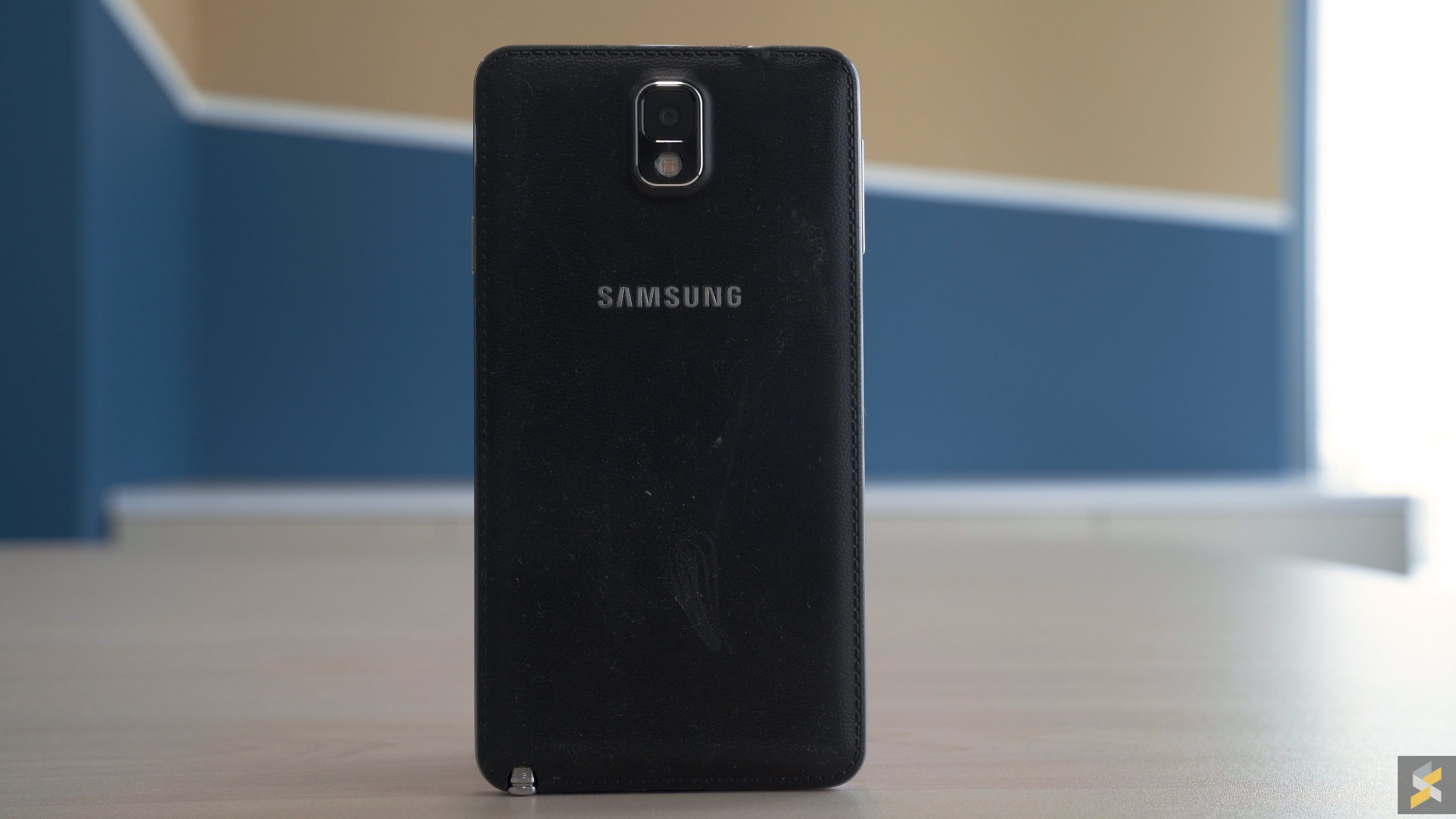
But, when Samsung went nuts with the specs, they also went nuts with the design, just not in a good way. The handset featured a faux leather back, fake metal rails that were actually plastic and it just doesn’t look cool. Not now, and definitely not back in 2013 when you consider that it was going up against one of the greatest smartphone designs of all time: The HTC One M7. And, much like the Note 2, I’d argue that the Note 3 didn’t leave much of a legacy in its wake. It was a spec bump at best, and when that’s the case it doesn’t stand the test of time. So, to me, it sits below even the Note 2.
Samsung Galaxy Note 4
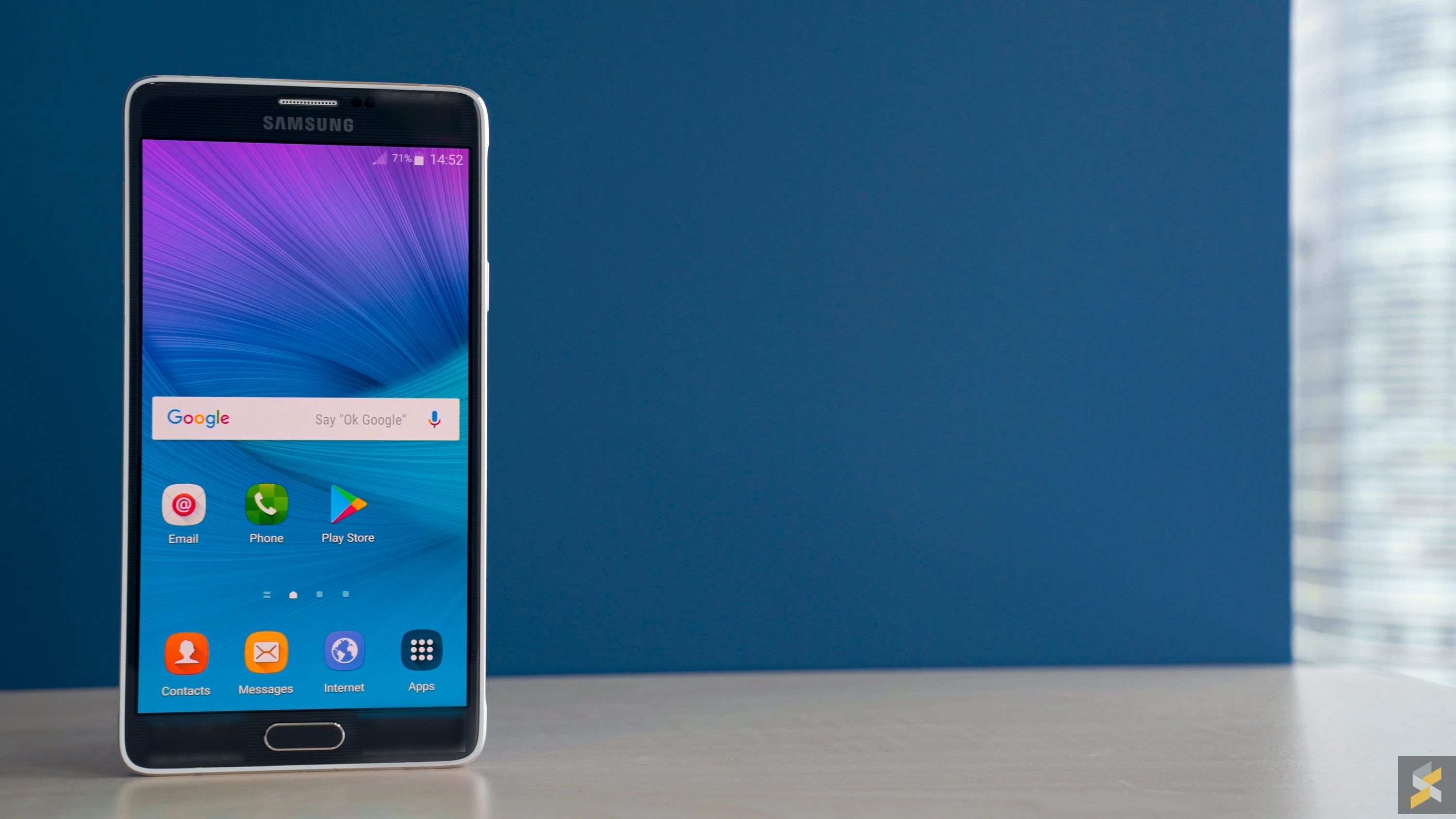
As we move into the Galaxy Note 4, you really start to see the first hints of the modern Notes that we know today. Even today, the device’ 5.7” Quad HD Super AMOLED display looks gorgeous. It’s sharp, vibrant and even blows modern mid-range screens out of the water. Naturally, it was also a spec beast and introduced modern features like Samsung’s Adaptive Fast Charging technology that the company still uses on its flagships to this day. It also added a fingerprint scanner, an IR blaster, a Heart-rate sensor and even Gear VR support.
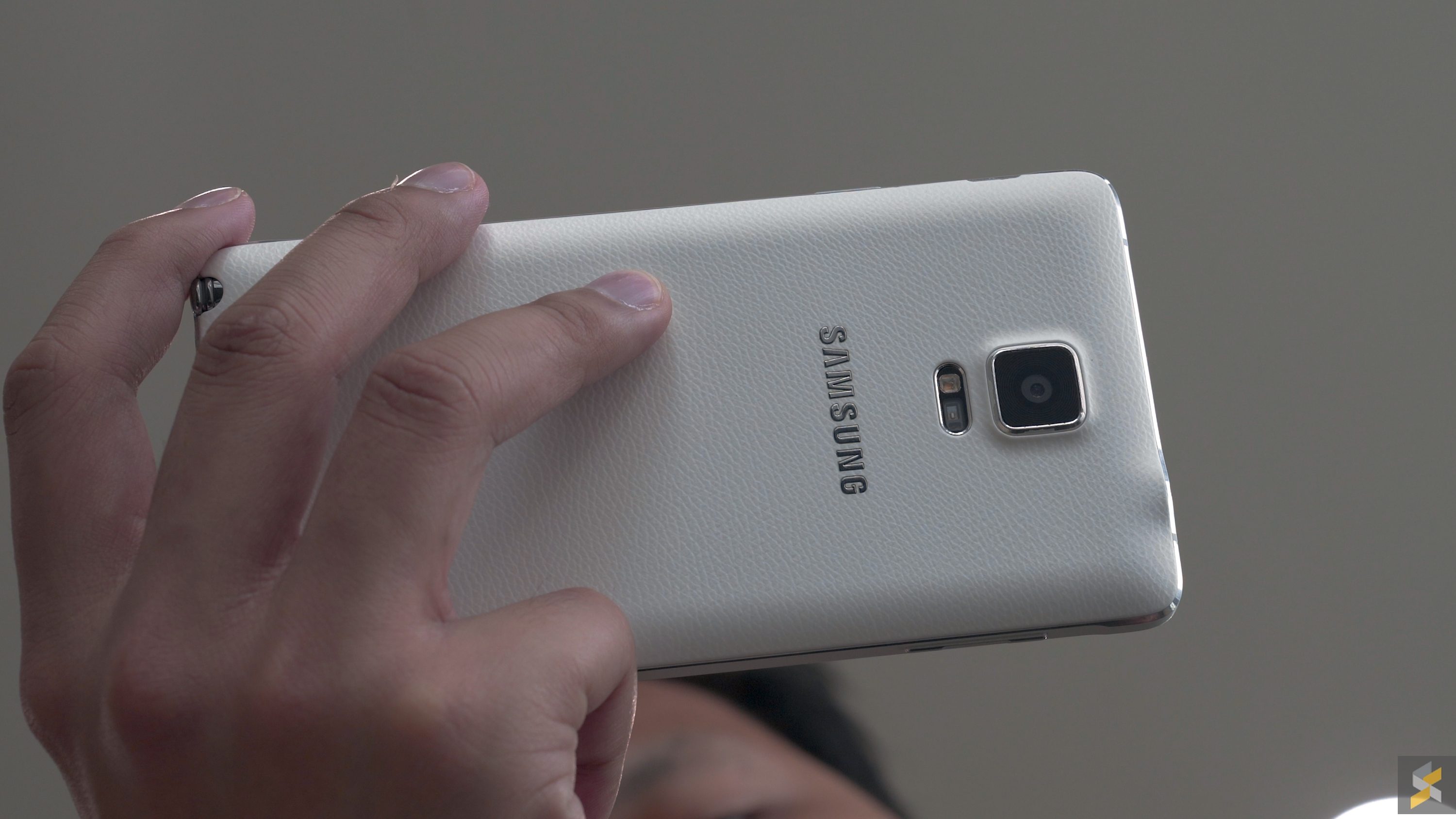
But, I think the thing that surprised me the most was how well its build and design held up. Yes, you can still see the shadows of Samsung’s design dark days, but the Note 4’s new metal frame gives you that reassuring robust feeling you get with all of Samsung’s modern flagships these days, and that’s a good thing.
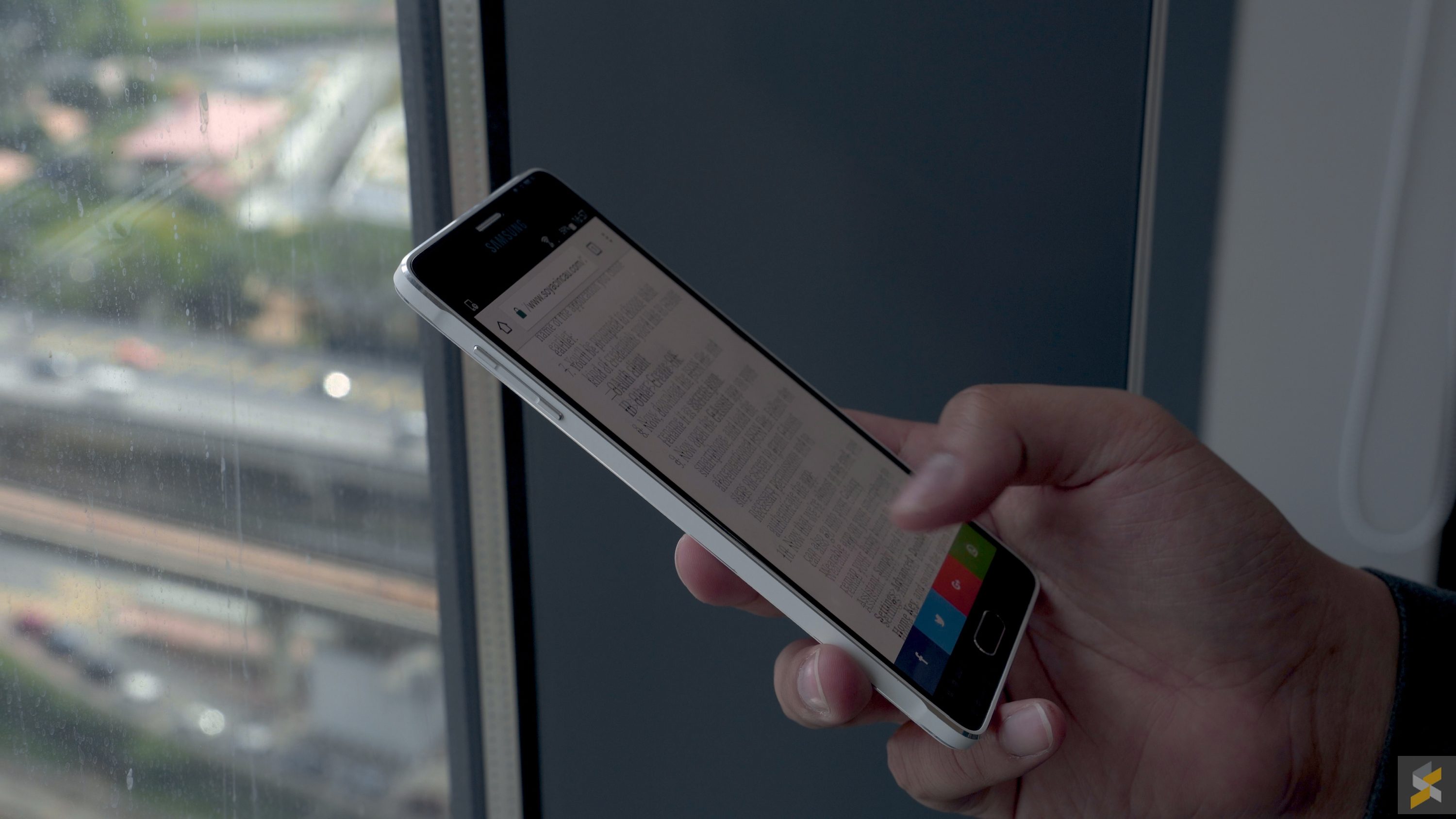
However, the Note 4’s legacy for its time was unfortunately overshadowed by the revolutionary Galaxy Note Edge. Y’know, that funky phone whose screen curved on one edge and basically set the mould for the dual-curved screens we immediately think of when we think “Samsung Flagship”. And it’s because of that that I’m ranking the Galaxy Note 4 below the original Note but above its other predecessors.
Samsung Galaxy Note 5
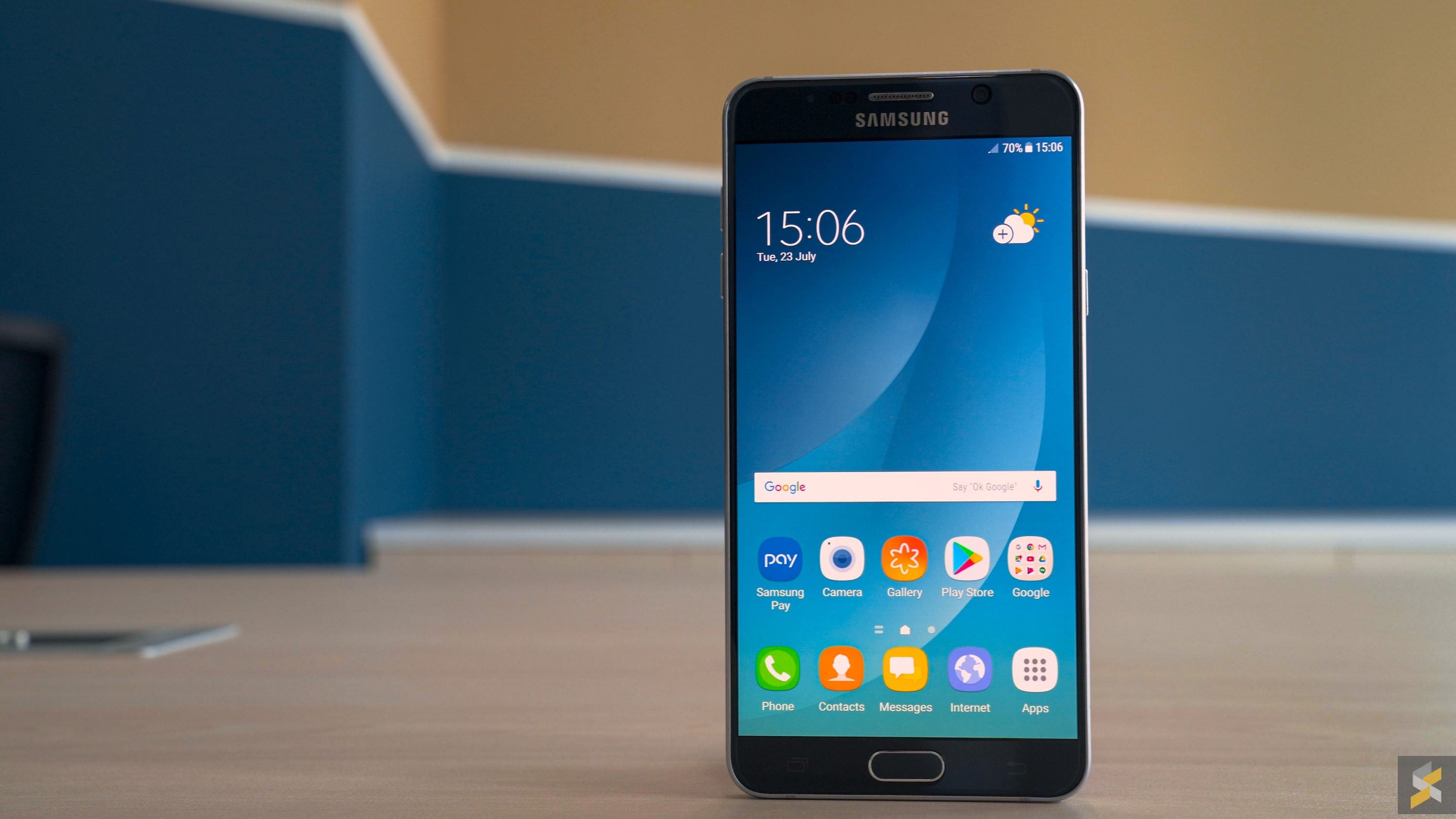
Then, everything changed with the Samsung Galaxy Note 5. If you’re a casual observer, you’d probably be able to tell that this is the first Samsung Galaxy Note that looks like the Galaxy Note you’d think of today. It was this gorgeous glass and metal concoction that oozed premium. The Note 5 gently curved at the back so it fit more comfortably in your hand, and it was the first time I’d say that a Galaxy Note felt expensive. And its looks definitely hold up, even today.
However, all this prettiness came at a cost because I think this is the least Note a Galaxy Note has been. You see, the Note is designed for the power user–the person who demands the best and absolutely will not settle for less.
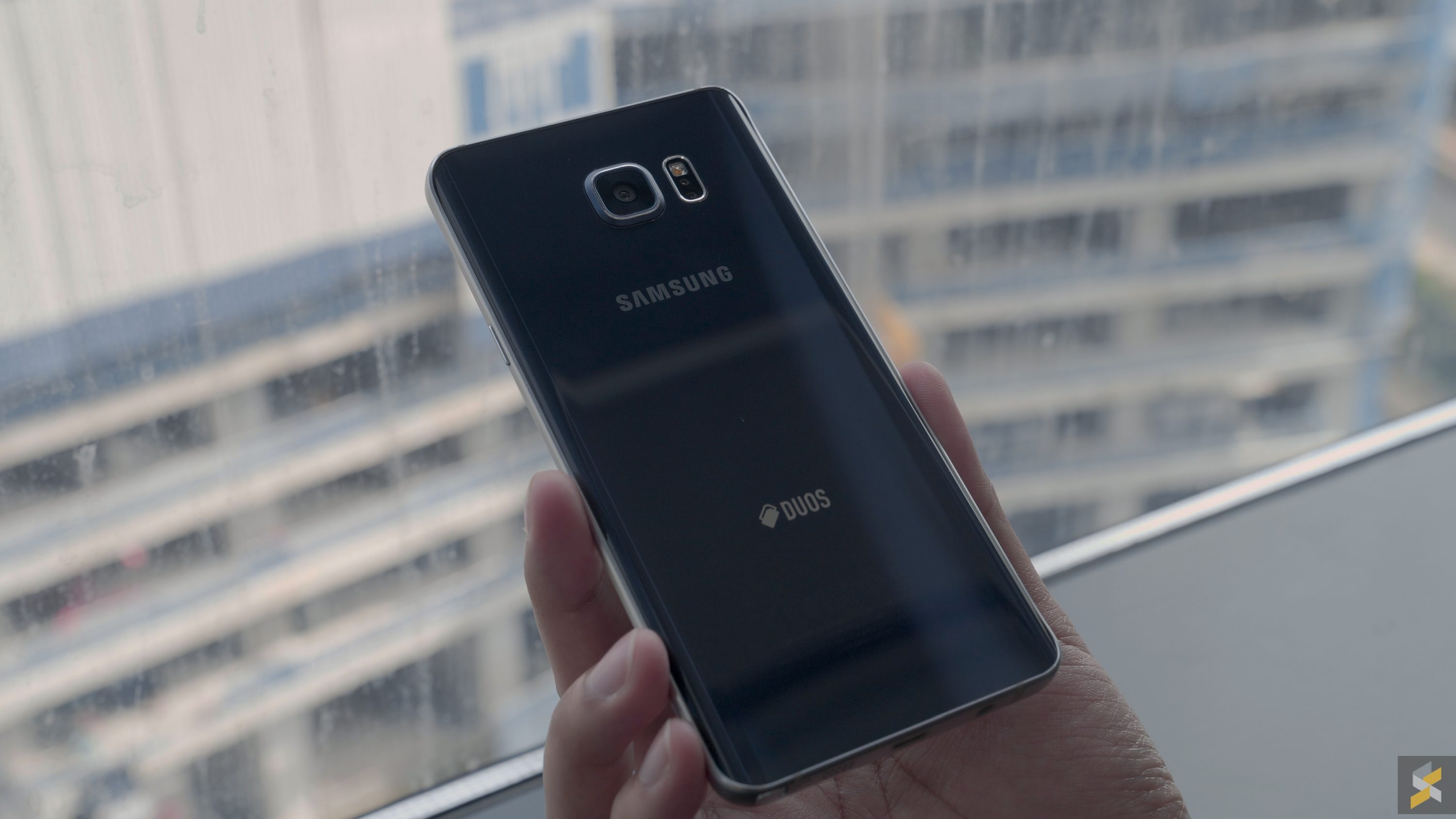
And while the Note 5 was a good performer with a great camera and a top of the line processor, it faltered in other productivity aspects. For starters, the 32GB of internal storage it launched with in Malaysia was nowhere near enough for its demanding clientele. To make matters worse, it came with a tiny 3,000 mAh battery–think about it, that’s smaller than 2012’s Galaxy Note 2!
But, that would have still been acceptable if it retained signature Note features like expandable storage and a removable, user replaceable battery, but it didn’t. The new glass sandwich sealed off any access a user would have to the back of their smartphone, and that was a big deal for many hardcore Galaxy Note users.
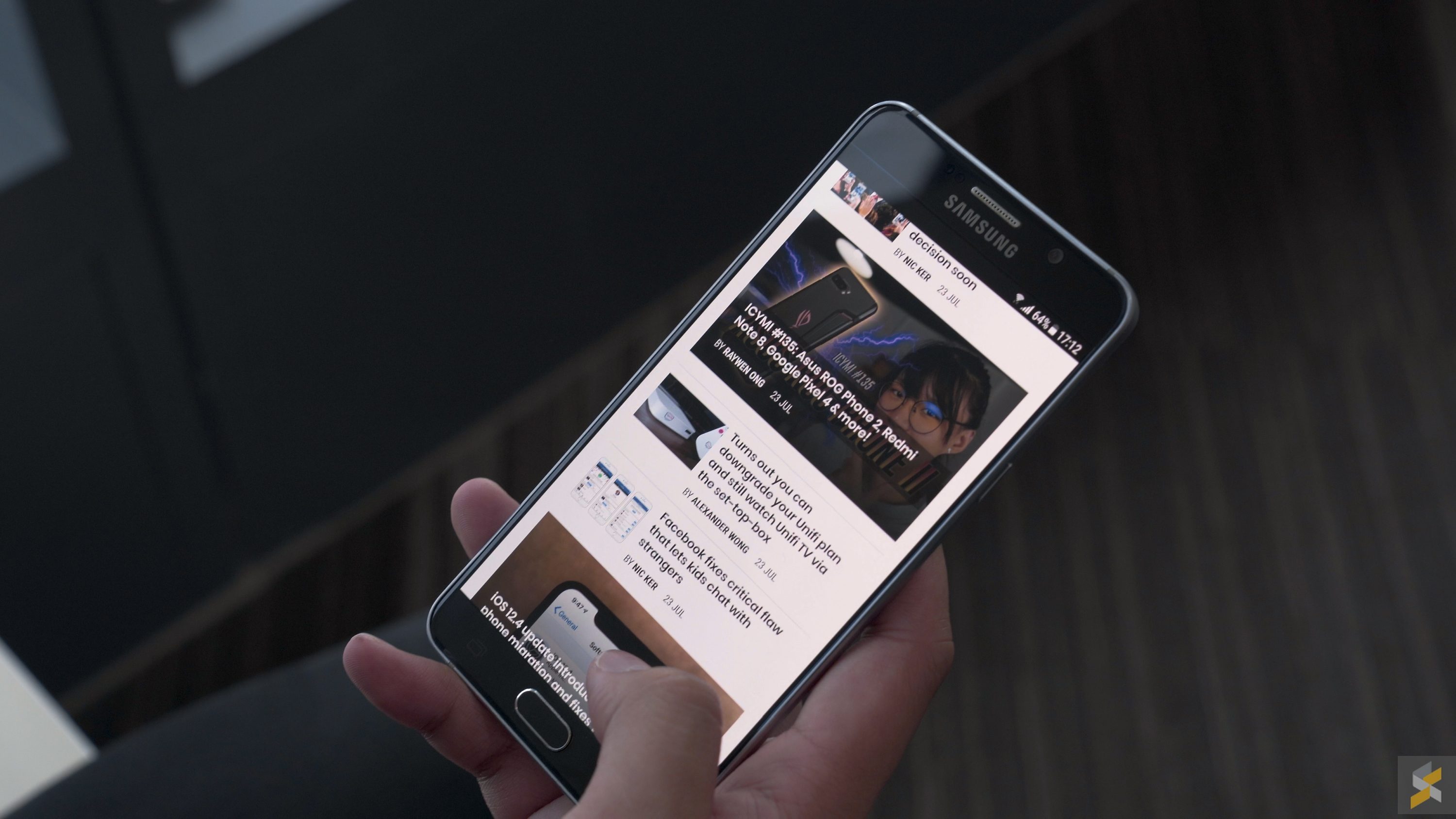
Then, you’ve got the ridiculous “PenGate” debacle where the newly designed S Pen would get stuck if you inserted it backwards into the silo. All in all, it was not a great look for the Note line, and it’s because of these issues that the Note 5 slides in right at the bottom of the rankings.
Samsung Galaxy Note 7
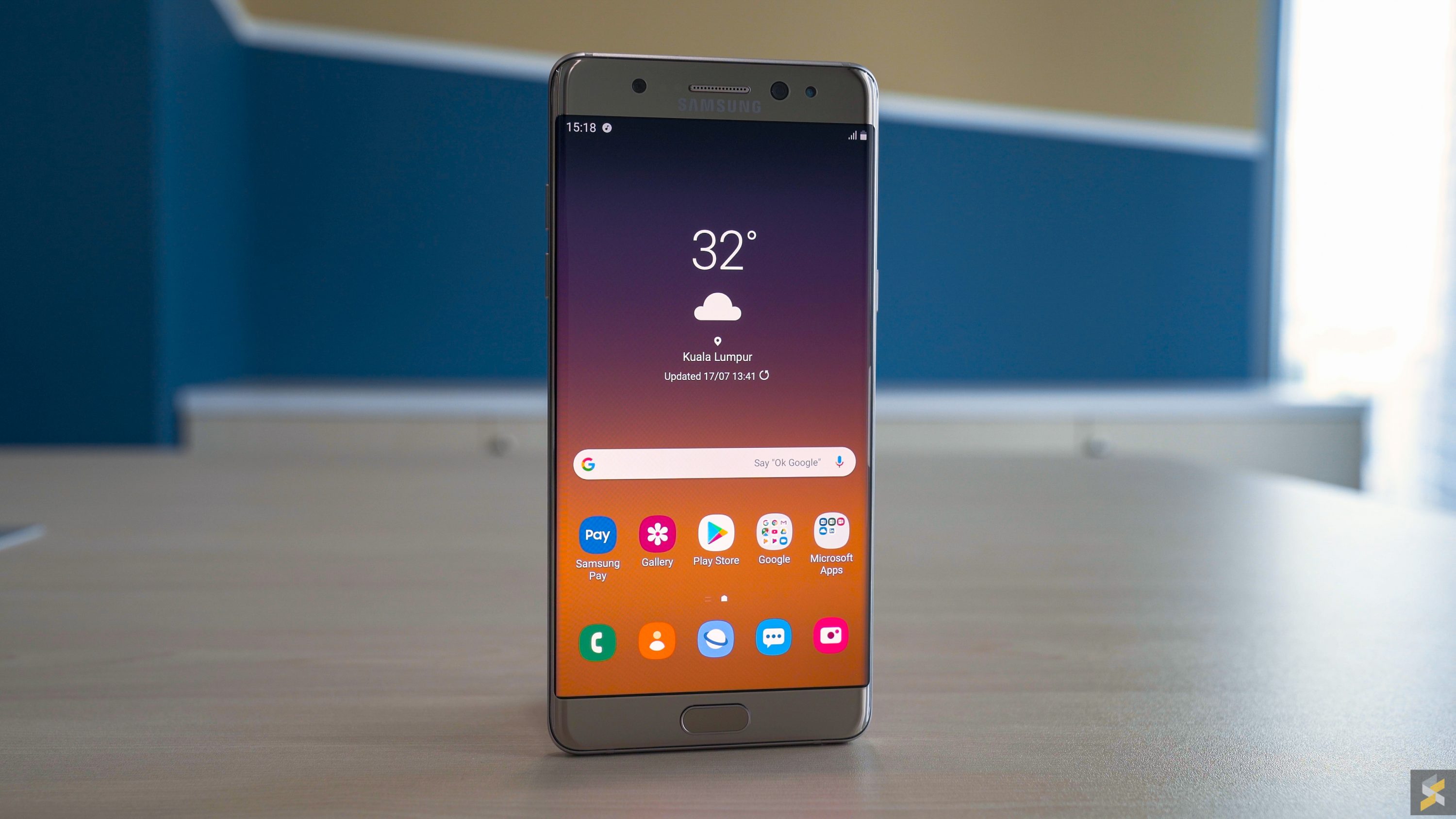
Following the lukewarm Note 5, Samsung regrouped, formed ranks and charged forward with what I still argue is the most incredible Galaxy Note handset I’ve used relative to its time: The Samsung Galaxy Note 7. Small caveat, there are no working Note 7s left, so for this video I’ll be using the Note FE as a stand-in. It’s almost exactly the same phone, just with a different battery.
In any case, the Note 7 was, quite simply, head and shoulders above its competition in 2016. It was radical in the way it looked, with glass bleeding over the edges on both sides, while also being one of the best built handsets. It’s definitely a phone whose looks and build still holds up today.
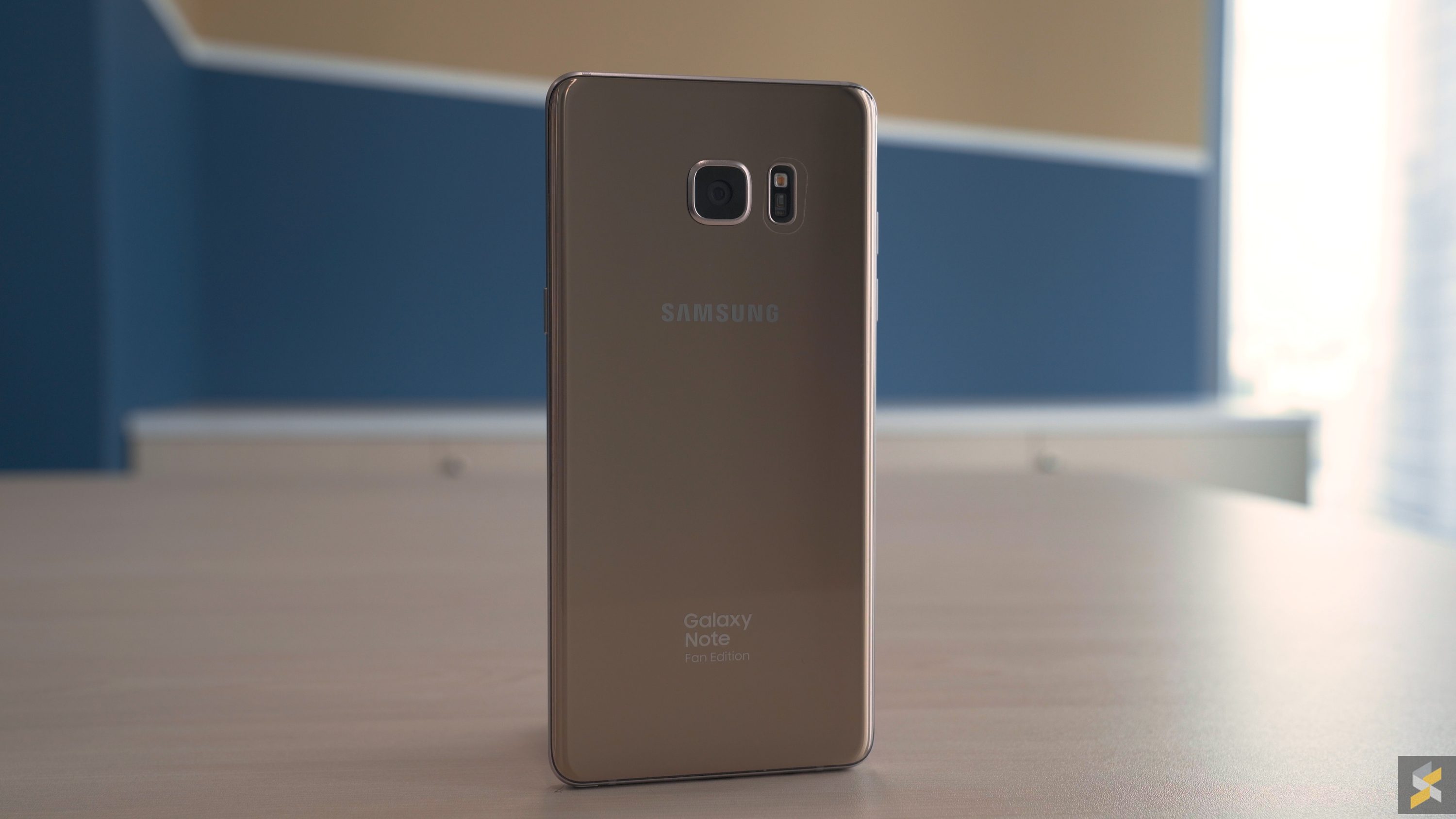
Inside, it was also the spec-beast you’d expect from a Note, with a top of the line everything, plus a new S Pen design, Iris Scanning, a gorgeous display and the return of fan-favourite features like the microSD card slot. Despite not being removable, the Galaxy Note 7 also came with a massive 3,500 mAh battery that gave users excellent battery life. But, alas, it was this battery that would ultimately mark the tragic fall from grace of this otherwise phenomenal smartphone. Because this particular battery had the problem of spontaneously catching fire.
As report after report of the Note 7’s battery issues streamed in, Samsung were forced to holt production and eventually pull the phone entirely, offering full refunds to everyone who purchased the handset. It was a dark time for the company, and it’s one that many would quickly point to when they thought of the “Worst Galaxy Note”.
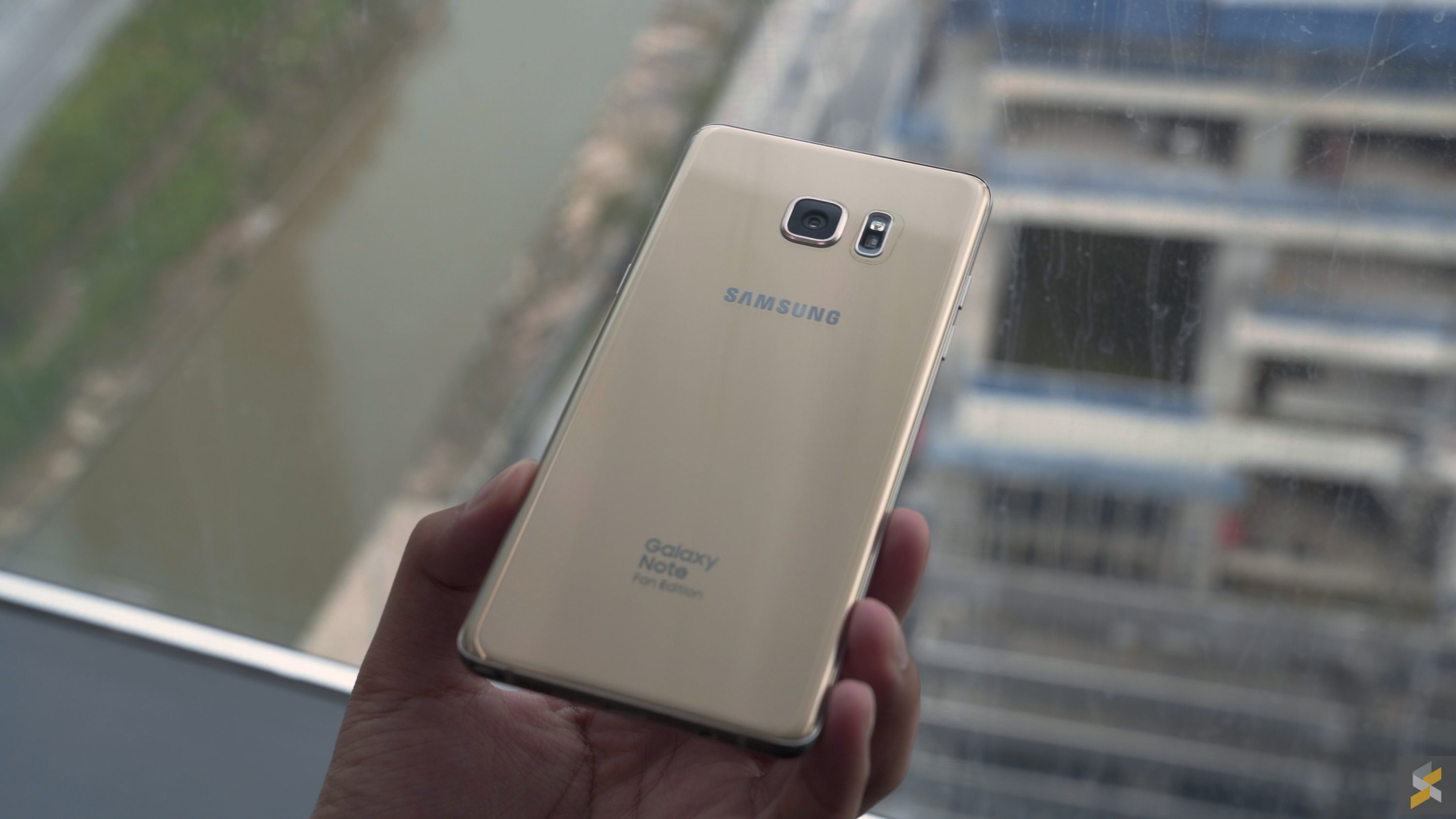
But I disagree. In fact, I think the Galaxy Note 7 is one of the most important Galaxy Note smartphones ever. It represented a lot of what the Note line was all about–the idea of pushing boundaries, and going where nobody had gone before.
The tragic outcome of this boundary pushing was that Samsung flew a little too close to the sun, and had its wax wings melted off, but from that, Samsung and indeed the world learned a lot. The Note 7 changed the way we thought about the little batteries that go into our smartphones. It revolutionised the public’s mindset towards the power cell that gives life to one of the most important devices in our daily lives.
Before the Note 7, nobody cared about battery safety. But after it, everyone was talking about that. People were asking other manufacturers about how safe their batteries were, and in that forged a safer future for all smartphone batteries and charging technology.
Samsung also became one of the industry leaders in terms of battery safety thanks to their new 8-point battery check, which is something every subsequent Samsung device will benefit from. It also let Samsung put on a masterclass about the most important thing about managing a PR crisis of this magnitude: Being honest and transparent. And that’s why I think the Note 7 is one of the most consequential Notes ever made, so it sits right into the top of my rankings, right below the original Galaxy Note.
Samsung Galaxy Note 8
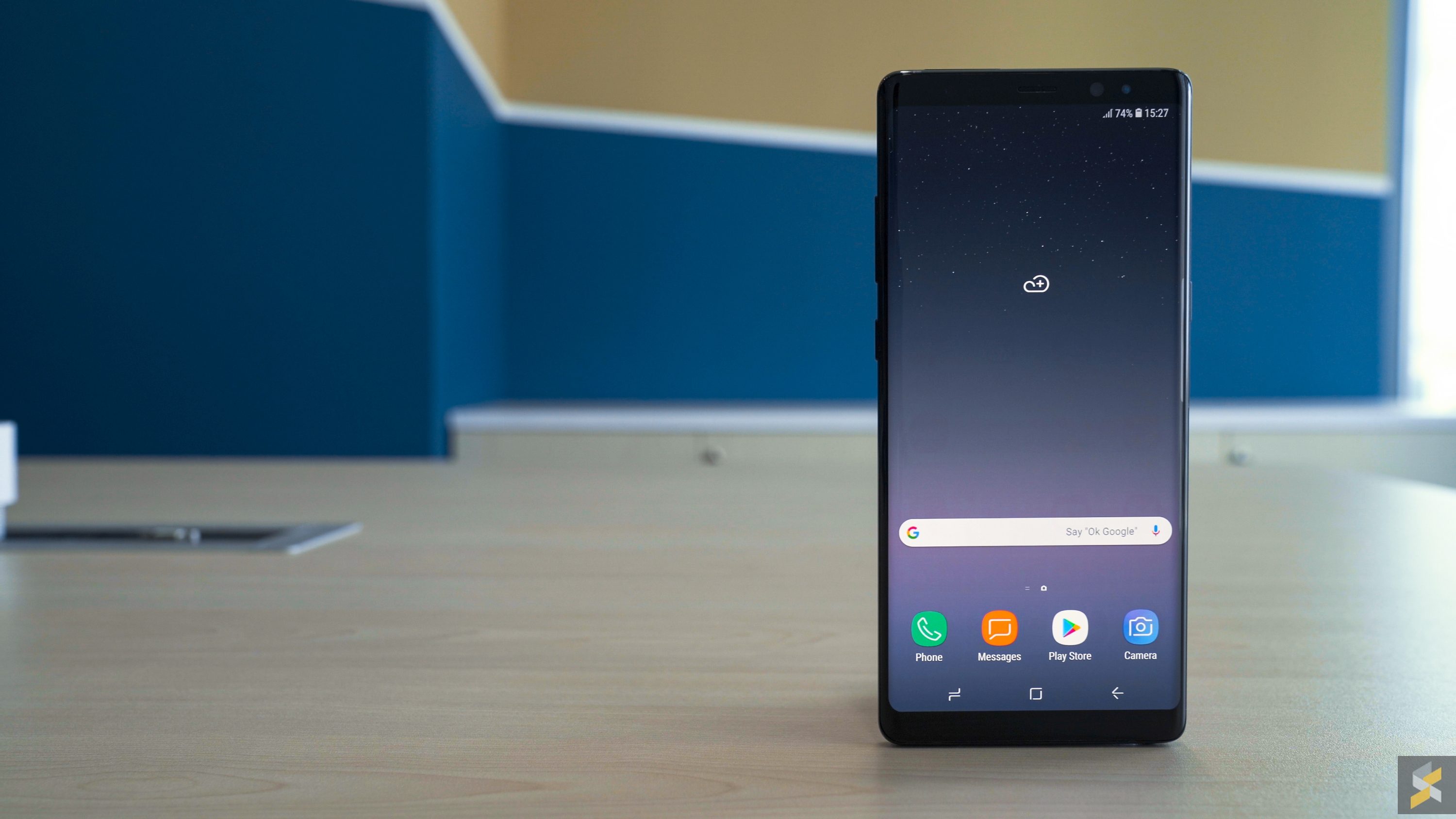
Following the Note 7, was the comeback device known as the Galaxy Note 8. For all intents and purposes, the Note 8 fulfilled its role of being a comeback Note very well. I enjoyed my time with the Galaxy Note a lot, and gave it a very positive review because it was a very good smartphone.
It introduced the Note to a new taller aspect ratio, had a great screen, great specs and a beautiful body that not many can match even to this day. But, in retrospect, especially when you consider the Galaxy Note line as a whole, it’s easy to see that the Note 8 was the play-it-safe Note. The Note that had Samsung pulling punches because the last thing it needed was to have two Notes failing back to back.
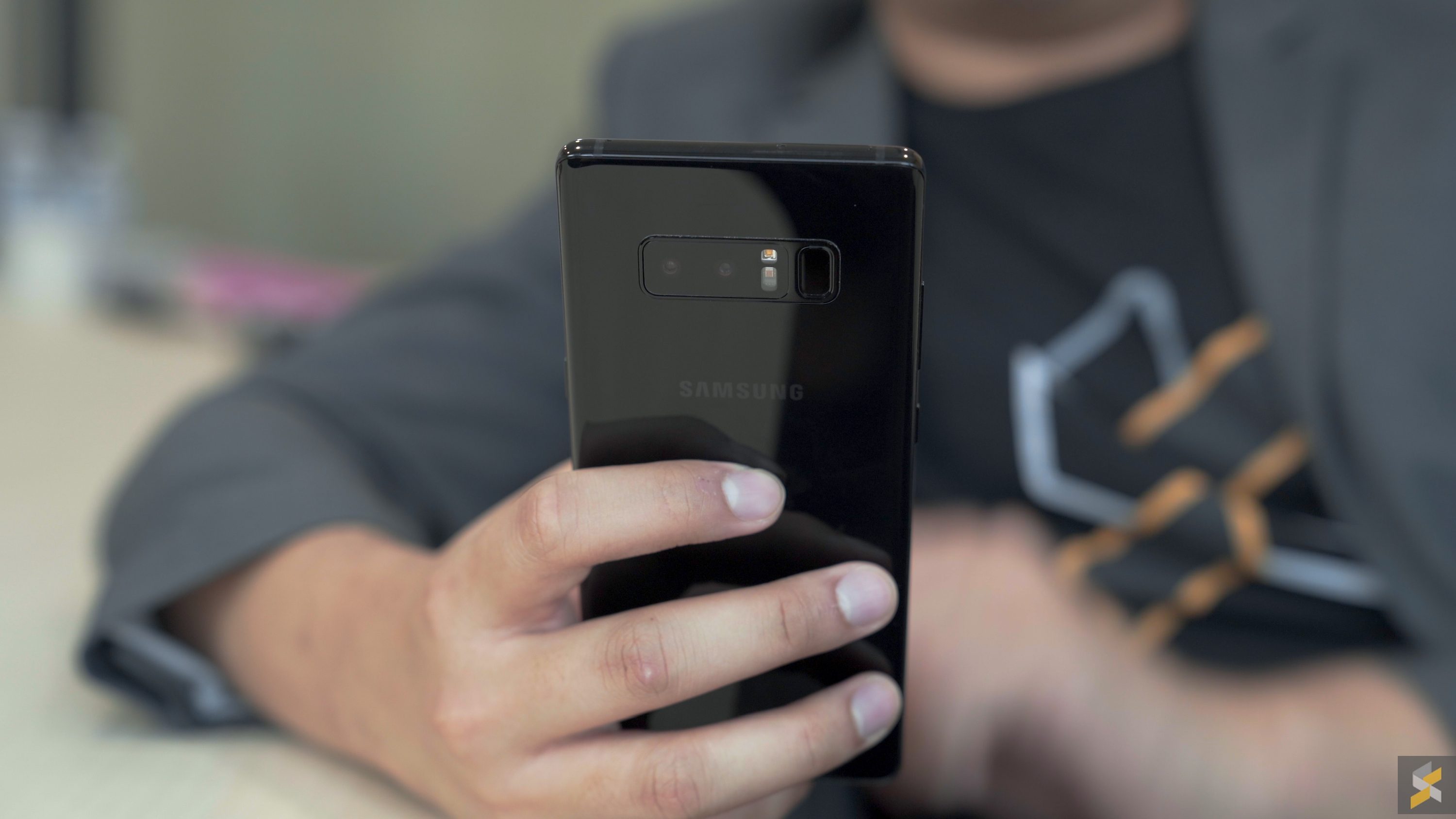
It had a tiny 3,300 mAh battery, an awful fingerprint scanner placement and was the first Note to kill the physical home button. So, while it scored pretty well in build and how it compared to the competition, the problem with this Note was that using it didn’t feel like using a Note. It didn’t feel like no compromises were made, or that they were pushing boundaries. It felt safe, and you don’t usually make an impact with safe. That’s why it’s sitting near the bottom of the rankings, just above the Galaxy Note 5.
Samsung Galaxy Note 9
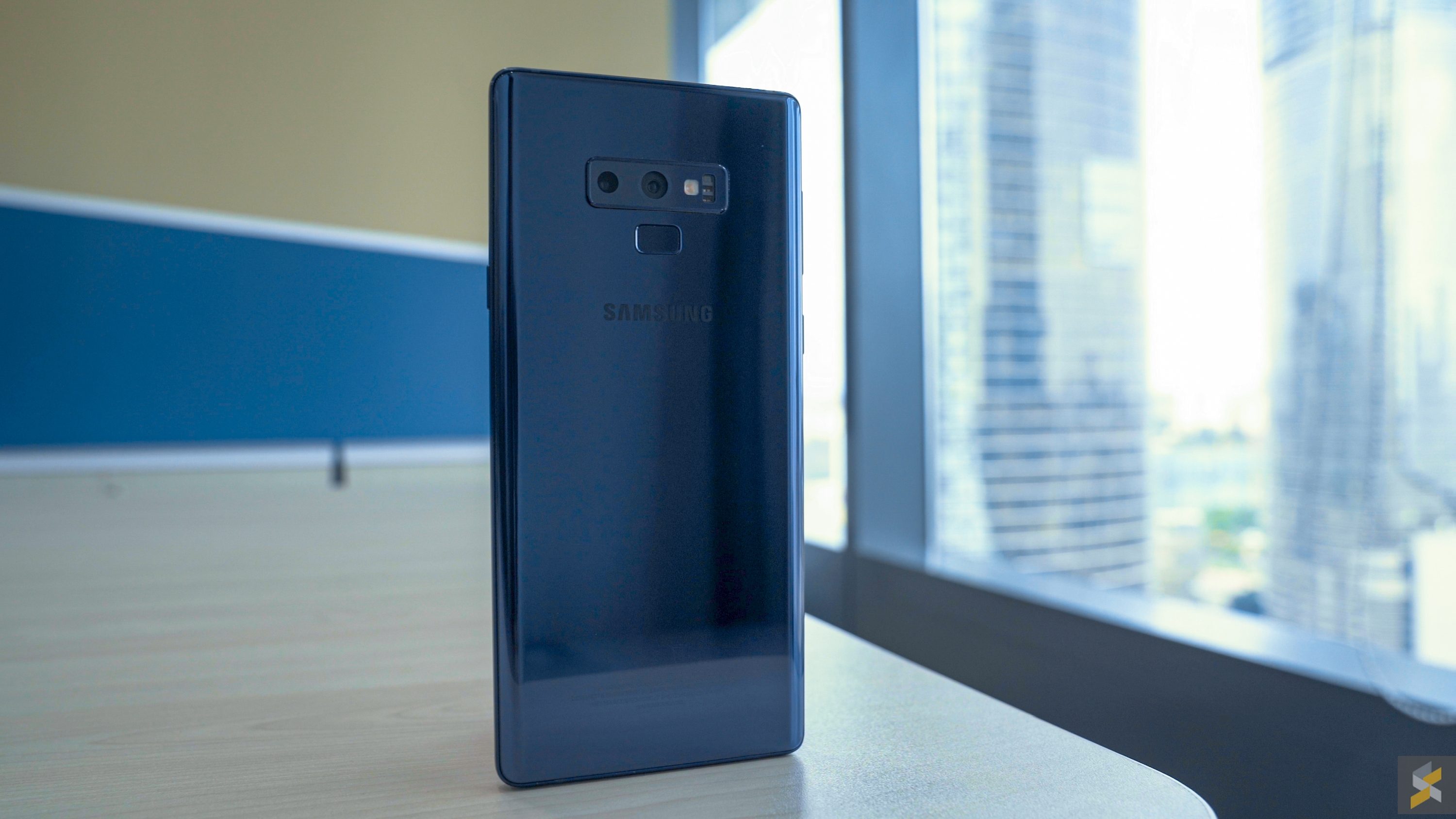
Finally, we’ve got the current Galaxy Note. The big daddy, the most complete Galaxy Note yet: The Samsung Galaxy Note 9. And that’s the keyword with this Note, it’s the most complete Galaxy Note yet because it does everything you want a Galaxy Note to do and then some.
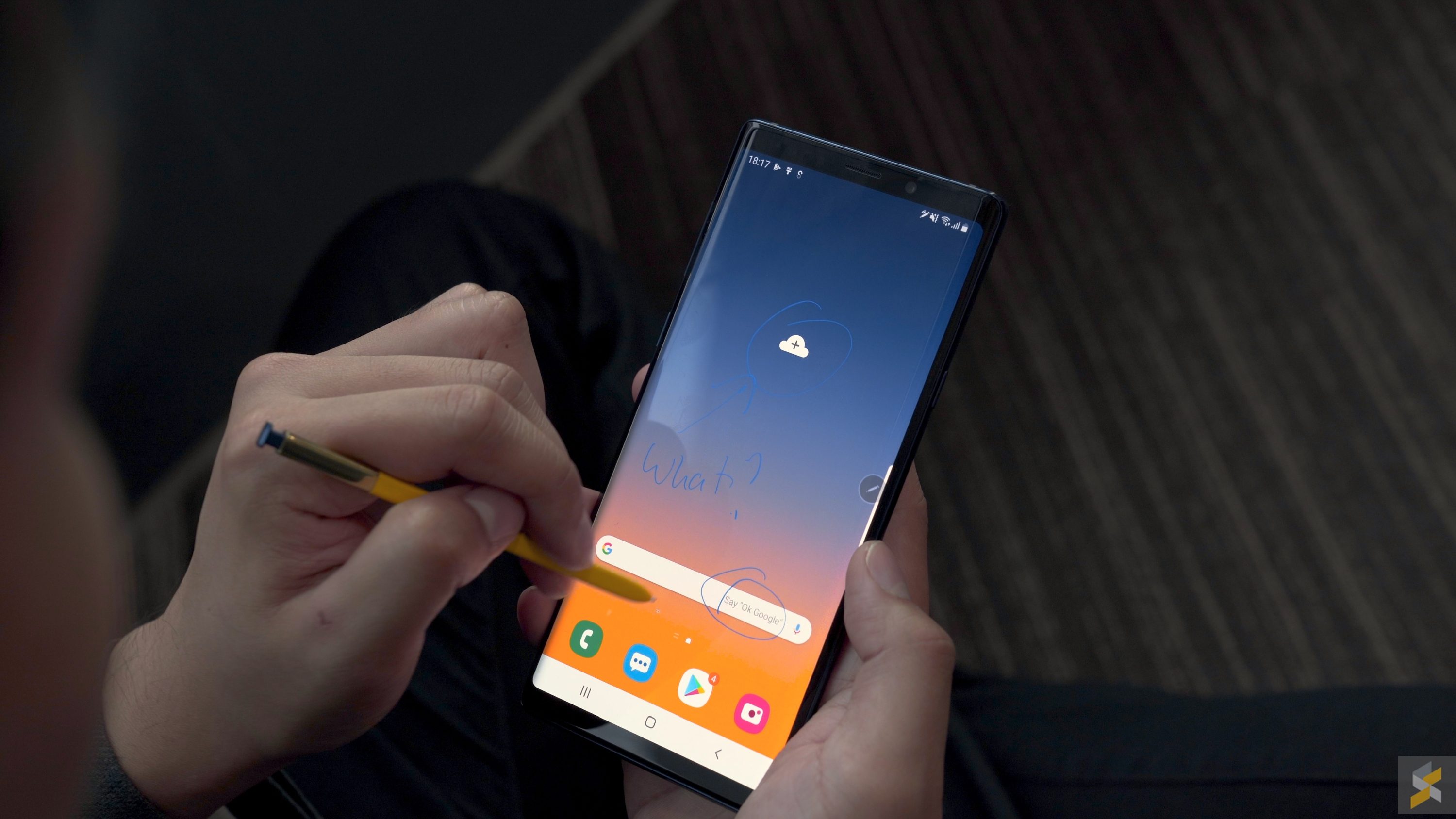
Big battery? Check. Best screen ever put into a phone? Double check. No-compromise performance, productivity features and a great camera? You betcha. It’s also IP68 water resistant, has support for expandable storage, a 3.5mm headphone jack, and even includes an Bluetooth-enabled S Pen that you can use as a remote trigger for slideshows and the camera.
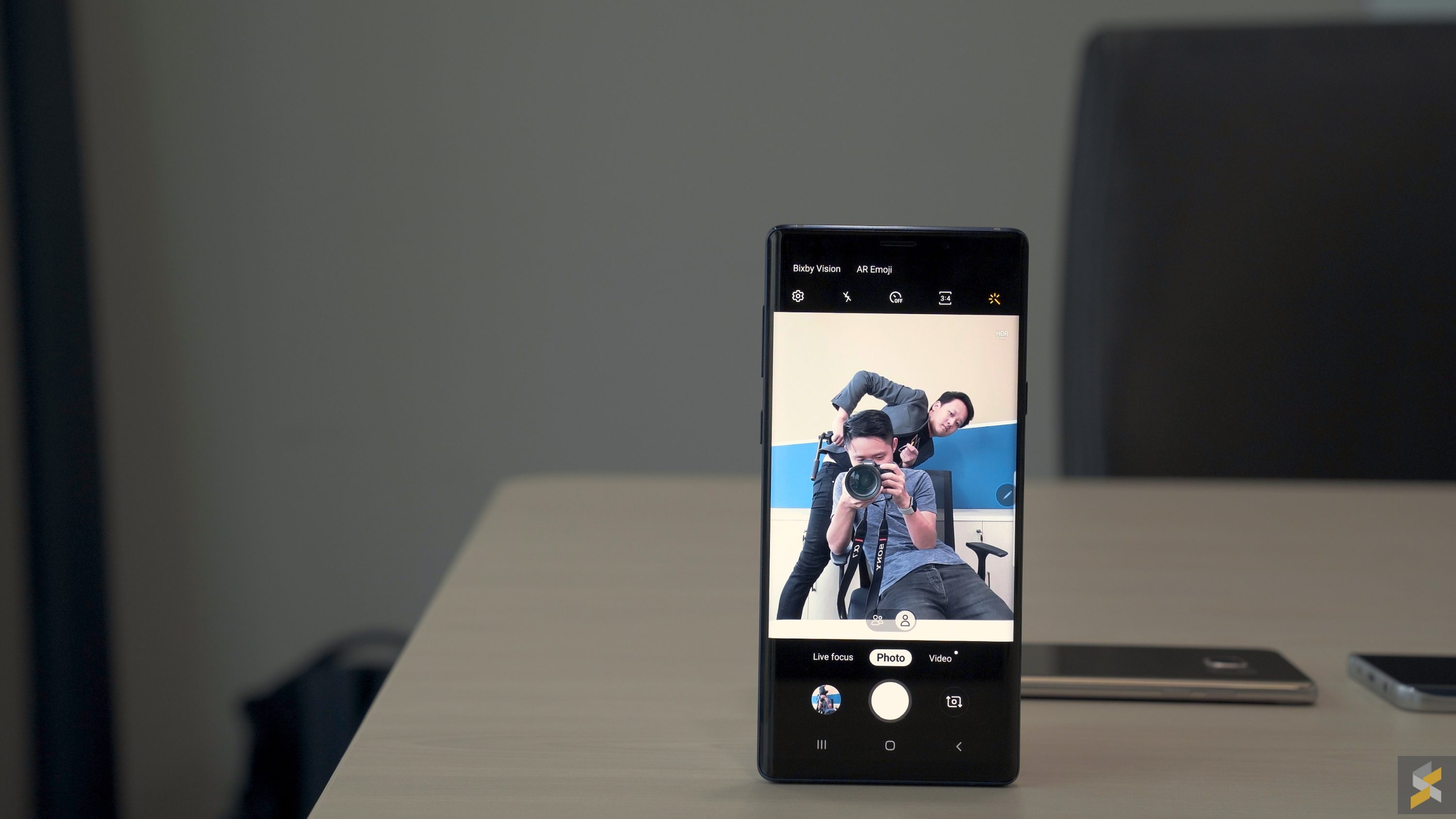
Although the Note 9 doesn’t have much of a legacy yet, this phone is very obviously the culmination of everything Samsung’s learned in the past. It’s the climax of everything we currently know and want in a Galaxy Note, and it’s awesome. That’s why, right now, the Galaxy Note 9 slides right into the top of my rankings by simply being the Note you can’t argue with. By being the quintessential Note, the one with everything, no compromises.
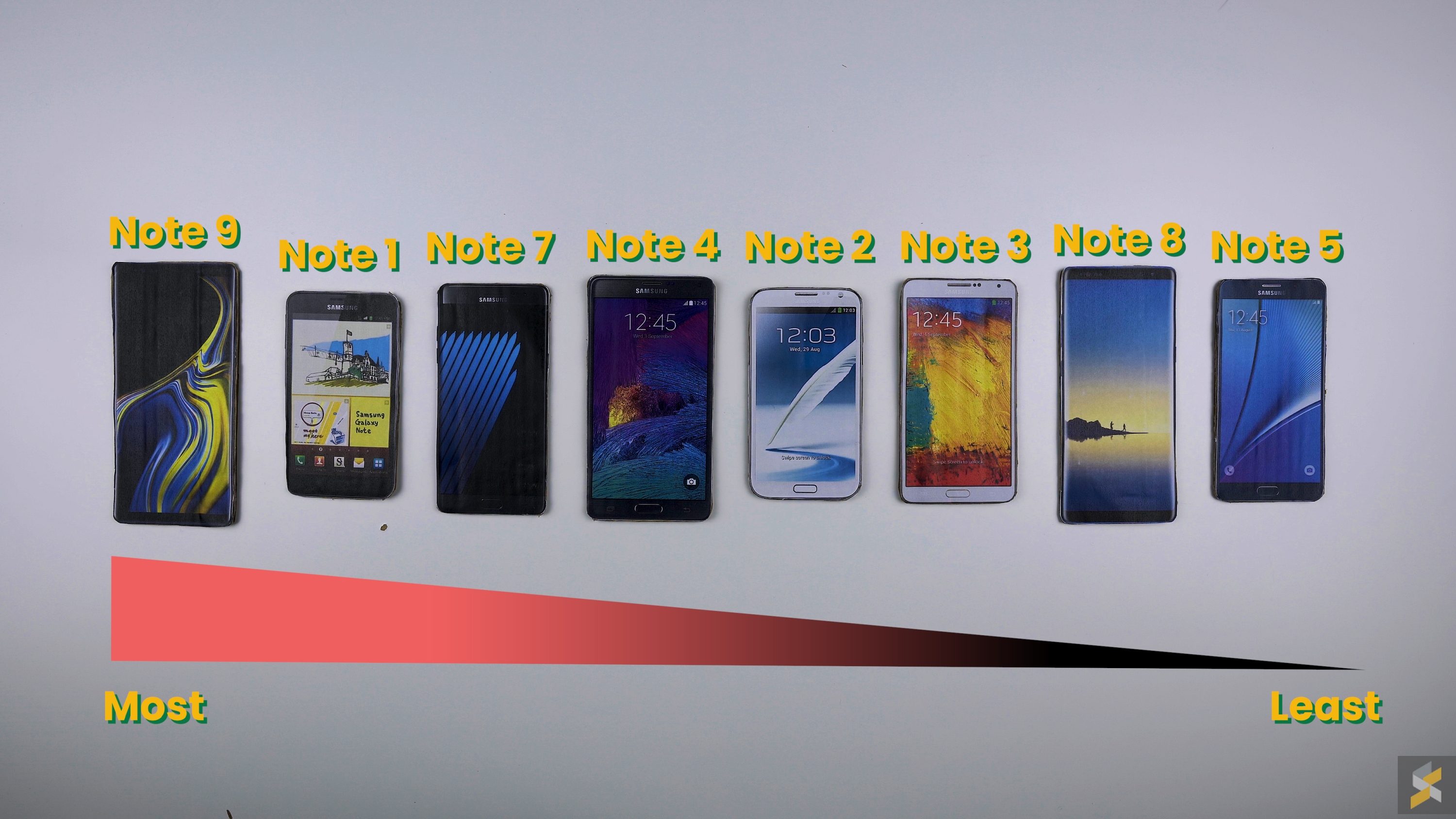
And that’s it, that’s the full list. Every major Note, ranked in order. Of course, this isn’t a final list because it could very quickly change with the launch of Samsung’s upcoming Galaxy Note 10, but for now I’m pretty happy with this. It’s not easy to rank phones that are as consistently good as the Galaxy Notes, so I’m sure there will be a bunch of differing ideas.
Which is why I’d love to hear your thoughts on my ranking. Do you agree with it? How would you rank the Galaxy Notes? Let me know in the comments below.
If you’re interested in knowing the latest info about the upcoming Galaxy Note 10, you can register your interest here.

